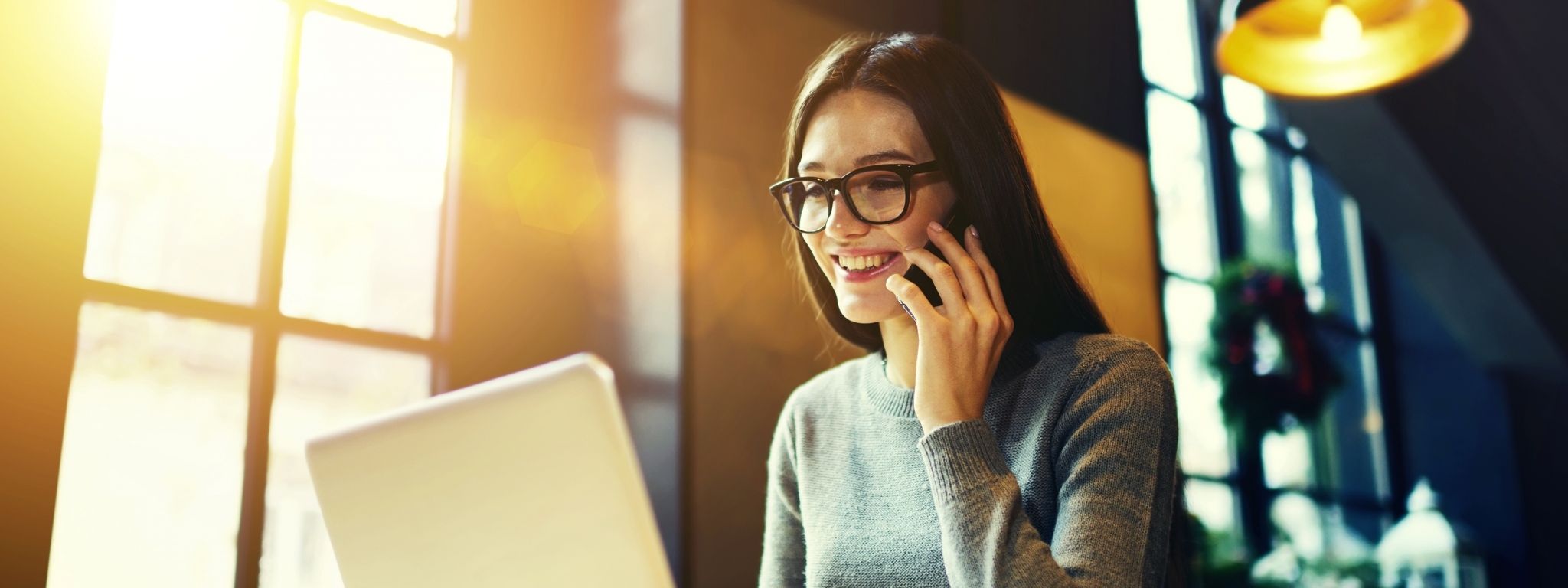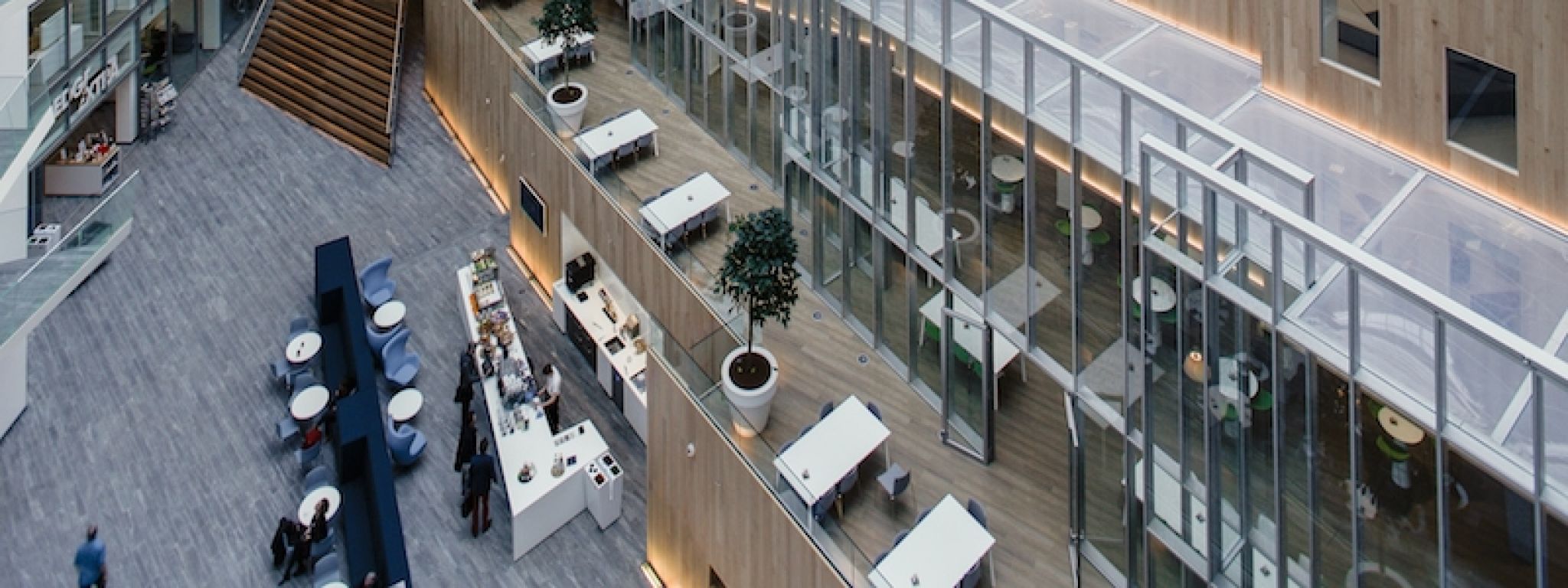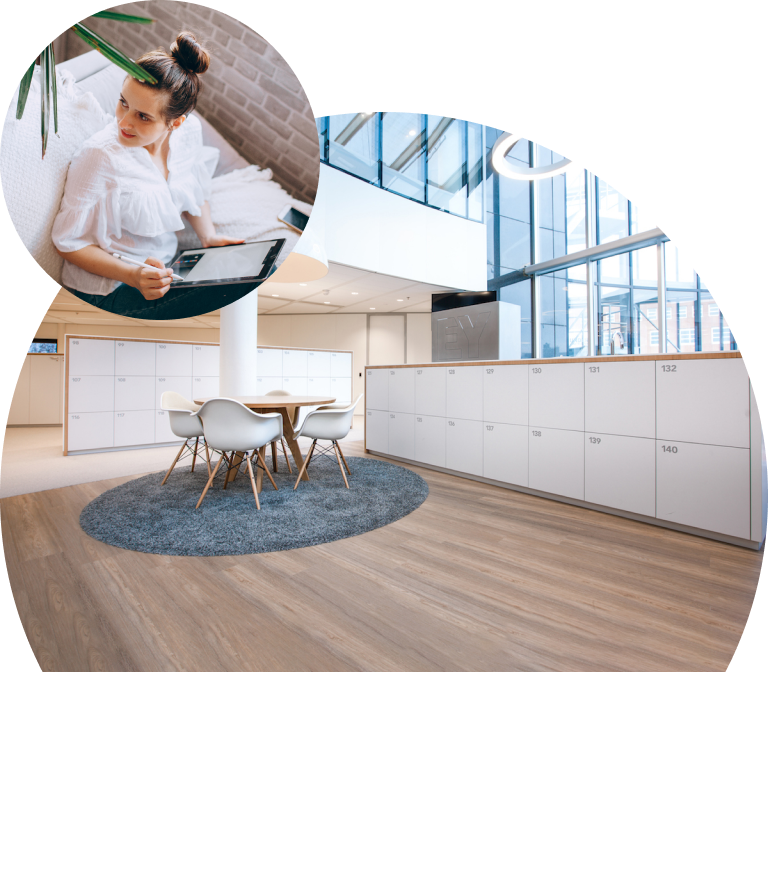We are still in the early days of this unprecedented global work-from-home experiment and predictions what the actual impact of the current crisis will be on workplaces around the world is still very uncertain. What we all agree on is that after the current crisis and all the changes made to accommodate remote working, a lot of employees and employers will have to find new working ways when adapting to the “new normal”. In this blog, we have interviewed one of our allied partners from Australia and to get a better understanding of how today’s response to flexible working will shape companies’ continuity tomorrow.
In the process of doing so, many organizations and teams will find a better way to work with the learnings from current situation. From a workplace strategy and design perspective, flexible working has been given an unexpected and potentially huge opportunity to revolutionize workplaces forever.
To better understand what the response is to the current crisis provoked by the COVID-19 pandemic and the effects on current workplaces in Australia, we have interviewed Daniel Grilli, Head of Sales at Schiavello Group. Schiavello Group is a partner of Vecos for Australia, Singapore, China and the United Arab Emirates.
Can you tell us who you are and about your role within Schiavello?
Daniel Grilli, National Manager – Head of Sales. I am responsible for existing and new National client relationships, empowering our clients understanding of Schiavello as a thought partner and one that understands their business initiatives, pain points and key vision. Our knowledge of workspace for 54 years and our focus on creating spaces for people, confirms our understanding of all business’s most important asset, its people.
What kind of workplace strategy is currently used in your region?
With around two-thirds of Australian office workers expected to be working in some form of dynamic workplace by 2020, it is clear that the agile working phenomenon has now extended into all sectors.
To reignite engagement and drive performance, particularly in the areas of collaboration, innovation and customer connection, any organization will have to find a way to express its purpose, brand and cultural values through a multitude of channels.
Whilst the Banking sector has led the dynamic working discussion for many years, we are seeing a positive trend in Government agencies now adopting Corporate principles to improve collaboration, connection, efficiencies, as well as Education to expose students to agile work methods.
How is real estate reacting to the current coronavirus situation and how will affect the crisis the real estate world?
It is the Black Swan event that has created an undeniable instability within the global economy and has certainly impacted commercial real estate in Australia.
The pandemic has put pressure on markets which are already in a late stage of their cycle, creating the potential for a delay to investment activity and putting a halt to keyspace commitment decisions. An increase in remote working is likely to reduce office utilisation rates, whilst landlords with exposure to short-term leases will be the most vulnerable. Co-working operators in particular may be at risk if members decide to cut short-term contracts in this current environment of uncertainty.
What this current climate has shown our industry, is that many businesses work from home model, policies, processes and infrastructure, are being tested right now. Those laggards, who have either not supported or currently have not implemented remote working, are now announcing a desire to embrace and fast track the adoption of remote working and as well as invest into collaborative technologies.
Whilst the demand for working from home and investment in collaborative technology grows, a stronger focus on higher utilisation and densification of space will drive efficiencies, resulting in limited space available.
How are architects reacting to the current crisis and how will this affect project concepts?
Like most businesses, the architect and design community, are taking steps to look after their people, projects and clients and stakeholders.
With halted travel internationally and domestically as well as any quarantine periods to those who have travelled internationally, the role of collaborative technology is so critical and is already being used successfully at every occasion in studios across Australia and abroad. This technology enables studios to communicate creatively and efficiently via a multitude of platforms. We are seeing that this is enabling businesses to support a remote working model and virtual collaboration with clients and partners.

“If there is one lesson borne out of dire circumstances, is that the businesses that have weathered the pandemic’s disruption will be those that have designed their workplaces around the principles of human-centred design, invested in innovative technology and have adopted an agile
working methodology.”
-Daniel Grilli, Head of Sales Schiavello Group
What is currently the impact of coronavirus in your region and what is going to change in the future?
The impact of the pandemic in Australia, is the obvious threat to businesses project pipeline and a halt put on innovative programs. A stronger focus is on the wellbeing of people and also the liquidity of the business through this challenging time. It is changing the way we communicate and connect in business. Engagement via collaborative technologies, clearances and checks for on-site technicians to service clients, have all required adaption in this challenging time.
Our social lives with family and friends and daily routines have been halted and challenged. The very fabric of community values are being tested by COVID-19. Just like in business, our community will need to adapt to the stringent protocols of hygiene, communal sharing, mass gathering etc to mitigate the spread of any further outbreaks.
Further importance will be put on the wellbeing of our people in business and the continuity of relationships and projects in our industry.
How is remote working and working from home affecting companies in your region? How are companies reacting to this?
Most progressive businesses in Australia, whilst mostly centred around travel and commute, have embraced a work from home model pre-pandemic. This has mostly been used as a strategy for a business to allow for diversity and culture within the workplace as well as comfort and community.
However, within an open plan environment, it is also a policy seen to reinject focus/attention, access and privacy to an employee, where the latter, has been somewhat compromised, within an open plan collaborative environment.
Those businesses through the pandemic, have used a work from home model as a positive example of wellbeing within the organisation, protecting their most important asset.
Businesses like Telstra, a large Australian Telecommunications company has sent 25,000 employees to work from home supporting the wellbeing of its employees, and mitigating the spread of COVID-19. Telstra has employed 2000 additional people to cater for the growing number of phone calls within their call centres. They are a great example of large businesses being malleable through new ways of working to protect their people but to also pivot in their business operations, to assist their customers going through financial hardship and instability for those that are grappling with a shifting to working and studying from home.
Whilst other businesses are adopting a more modest approach. Creating a 50/50 occupancy split amongst its employees within their tenancies to lessen the risk of spread of COVID-19. This pandemic is an evolution, but there is a sense of this natural disaster being a National interest for all companies to play a role in ensuring Australia comes through as strongly as possible.
Will the corona crisis accelerate the implementation of a flexible workplace strategy?
Without question, this pandemic has been a wakeup call to all businesses who have not implemented some form of flexible working.
Those claiming that flexible working models “aren’t for our business” or “we are not ready for that way of working” should really reassess their working polices, design principles, network infrastructure, collaborative technology. Dare I say, those businesses that haven’t evolved, are the ones that are playing catch up, and their people are disillusioned culturally with their employer.
In these times, employees will know if their employers lead from the top, value their people’s wellbeing, and have a plan of preparedness in adverse circumstances, so that productivity and BAU remain unaffected.
Which changes do you think are temporary and which ones will remain/effect for good workplaces and workplace strategy for future projects?
People protection and wellbeing will be at the forefront as a duty of care to any businesses employee, but, also to ensure business continuity, and employee productivity.
Business operations and continuity plans will no doubt be critical in the preparedness for other natural disasters hitting.
Remote working is one theme that will stay beyond 2020, with many businesses to embrace flexibility and malleability in light of this recent pandemic. The adoption of collaborative communication channels and collaborative technologies will be at the core of smart workplaces allowing employees to connect digitally and maintain cohesion and productivity.
If there is one lesson borne out of dire circumstances, is that the businesses that have weathered the pandemic’s disruption will be those that have designed their workplaces around the principles of human-centred design, invested in innovative technology and have adopted an agile working methodology.
The saying “innovate or die” for me, rings very true in many forms, but no more so than in business.
The new normal will be basic protocols in physical distancing, size and duration of meetings with a possible change of face to face meetings to virtual or teleconference meetings, limiting access within tenancies, expanding safety and hygiene practices, businesses embracing remote working and investing into collaborative technologies.
What tips do you have for the management team regarding flexible working?
- Wellbeing should be at the forefront of all workplace design principles. COVID-19 should provide key learnings for all businesses for now, and for the future of their workplaces
- Leadership culture must be strong and must embrace employees working within autonomy.
- Transfer Activity Based Working -> Team-Based working to create a solution to the current challenge for businesses: a need for better connection and better team collaboration.
- When considering a flexible working method, focus on a change enablement approach, that is proactive, fosters engagement through co-creation, empowers employees to take control of their change experience and is positive and value-adding. This will ensure that employees actively participate in shaping their future workspace experience.
Any success or failure is in the change program implemented. Consider the following :
Behavioural change:
- An organisational culture that embraces flexible working and appraises performance on output
- Leadership culture that embraces employees to work with autonomy
- Diverse spaces: collaboration, focussed and retreat spaces
- Neighbourhoods to ensure teams and people remain connected
- Ongoing change culture to train and manage existing and new behaviours.
Enablers:
- Cloud and mobile technologies to ensure seamless movement from work points through a digital connection
- Smart storage strategies, like Vecos, to enable digital mobility and increase user experience
- Reduction in team and individual storage to untether employees
- Hygiene and ergonomic considerations with workspace sharing
- Security of information, policies and procedures.




